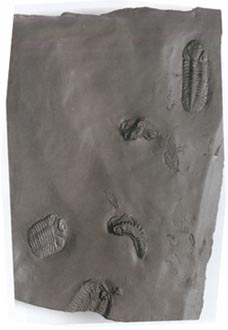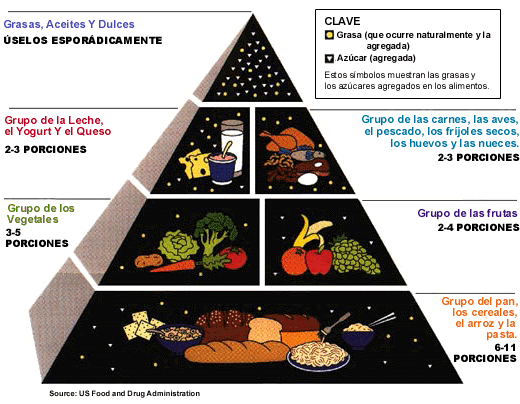- Proyección de las películas "solas" y "te doy mis ojos".
- Elaboración de un mural donde los alumnos han escrito sus impresiones sobre el tema.
- Un minuto de silencio en recuerdo de las víctimas de la violencia de género en la puerta principal del instituto con la lectura de un manifiesto.
Friday, November 24, 2006
Día contra la violencia de género
Hoy se han realizado una serie de actos en el instituto para sensibilizar a los alumnos contra la violencia de género. Las actividades han sido las siguientes:
Friday, November 17, 2006
FILES OF THE EARTH H ISTORY
Geologists collect and study rocks to find out about the geological history from a part of the earth. Thus if they find granit 400 million years old (m.y.o) in a location, they can state that this region was an active magmatic area during this specific period.
What are some of the most abundant rocks telling us about ancient processes?.
LIMESTONE: a very common sedimentary rock in Spain, specially in the east end north . Places with this kind of rock were once under the sea (not very deep) or they were coral reefs.

fossil "trilobites" on slate
BASALT: rock raised when the volcano lava cools fast. If you find this rock in some place, you can infer that this area was once close to an active volcano.
Every rock has an history. When we put together the histories of different places, we can find out about the big history, THE HISTORY OF OUR PLANET.
What are some of the most abundant rocks telling us about ancient processes?.
LIMESTONE: a very common sedimentary rock in Spain, specially in the east end north . Places with this kind of rock were once under the sea (not very deep) or they were coral reefs.

Limestone strata
SLATE: metamorphic rock that comes from mudstone when temperature and pressure is high. These mudstones originate from sediments settled on the floor of the ocean, therefore the fossils that we find in the slate come from the fauna who lived over there time ago. Slate in Montes de Toledo has abundant fossils so we can figure out very accurately about the animals existing in the earth oceans 440 million years ago.
BASALT: rock raised when the volcano lava cools fast. If you find this rock in some place, you can infer that this area was once close to an active volcano.
Every rock has an history. When we put together the histories of different places, we can find out about the big history, THE HISTORY OF OUR PLANET.
Wednesday, November 15, 2006
PARTNER SCHOOL
We have got in touch with a secondary school in Manchester, England, and we plan to develop a number of common projects to work together.
During this week we will be recording a presentation video that will be sent to them as an intruduction of ourselves.
During this week we will be recording a presentation video that will be sent to them as an intruduction of ourselves.
1st Contact with Manchester
We have already started to write our presentation letters to the pupils in our partner school in Manchester.
All the students in 1ºE, 2ºE and 3ºD are writing a letter in English about themselves. All the letters will be sent by mail to the school in Manchester together with a picture of the students per class. Once the students there get our letters they will have to guess to whom each letter belongs( the descriptions and pictures will help them), and write back.
We hope students and teachers enjoy the activities we carry out.
We'll keep you posted.
All the students in 1ºE, 2ºE and 3ºD are writing a letter in English about themselves. All the letters will be sent by mail to the school in Manchester together with a picture of the students per class. Once the students there get our letters they will have to guess to whom each letter belongs( the descriptions and pictures will help them), and write back.
We hope students and teachers enjoy the activities we carry out.
We'll keep you posted.
Wednesday, October 25, 2006
¿QUÉ HE COMIDO HOY?
Es una pregunta muy frecuente, pero nunca nos hemos parado a pensar realmente si hoy he comido bien. El trabajo que he mandado en clase y que estais haciendo en estos momentos (o eso espero), intenta provocar en vosotros y vuestro entorno un análisis de cómo es mi alimentación diaria.

Todos sabemos que os encontrais en un periodo de cambios (físicos, mentales o psicológicos y sociales), pues es en este momento donde la alimentación, la actividad física y los hábitos posturales diarios cobran una mayor importancia.

Existen muchas tablas o pirámides de la alimentación, pero lo importante es que cada un@ en su casa siga unos consejos básicos: comer de todo (aunque no me guste: ¿lo habeis probado de verdad?), muchas frutas y verduras, que la grasa o los dulces se coman de forma esporádica, no comer con demasiada sal y sobre todo, desayunar bien.
RECORDAD: en vuestro trabajo teneis que apuntar lo que comeis y bebeis durante una semana, intentando concretar algunos aspectos
ES VUESTRA GASOLINA ¡QUE APROVECHE!
Tuesday, October 17, 2006
Field trip to Gredos postponed
Due to adverse weather conditions and forecast the field trip to Gredos is postponed untill next wednesday
Friday, October 13, 2006
We go on a field trip to Gredos!!
On next Wednesday October the 18th the three ¨British¨ groups are going on a friendship field trip to the well known place ¨La Laguna Grande de Gredos¨ an impressive place in the heart of our beloved mountains.
It will be two hours walking and the students will have to wear comfortable clothes and shoes as well as to carry appropiate food. Don't carry trash like fizzy drink cans or chips!! you will have to carry the litter back down the valley!!.
It will be two hours walking and the students will have to wear comfortable clothes and shoes as well as to carry appropiate food. Don't carry trash like fizzy drink cans or chips!! you will have to carry the litter back down the valley!!.
Thursday, October 05, 2006
Mistery Mineral Match
We have started already studying about minerals in the science class. Yesterday we went to the laboratory to perform some tests that geologists use to discover the minerals present in rock samples. 
All rocks are composed of minerals. The combination of minerals determines the rock type. Rocks with high concentrations of valua ble minerals are mined for human use. Minerals have characteristic properties that can be used by geologists to help identify them, such as color, hardness, or shape.
ble minerals are mined for human use. Minerals have characteristic properties that can be used by geologists to help identify them, such as color, hardness, or shape.
Geologists are the scientists who prospect, or explore, for minerals found inside the Earth. These scientists carefully make observations and record data to help them answer questions about the resources contained inside the Earth's crust. Through careful study, geologist have discovered that although there are over 3000 different minerals, 90% of the Earth's crust is made of only 20 of them.
The minerals that make them up are important to us because we derive, or take what we need from them. For example, lead can be derived from the mineral galena. People use lead to make batteries, ammunition and antiknock additives for gasoline. Mining minerals is expensive, but we have come to depend on minerals in manufacturing the products we use every day. Minerals that are rare or especially beautiful are called gemstones. Most gemstones are colorful crystals of common minerals. Graphite, or pencil "lead", changes into diamond under enormous pressure.

All rocks are composed of minerals. The combination of minerals determines the rock type. Rocks with high concentrations of valua
 ble minerals are mined for human use. Minerals have characteristic properties that can be used by geologists to help identify them, such as color, hardness, or shape.
ble minerals are mined for human use. Minerals have characteristic properties that can be used by geologists to help identify them, such as color, hardness, or shape.Geologists are the scientists who prospect, or explore, for minerals found inside the Earth. These scientists carefully make observations and record data to help them answer questions about the resources contained inside the Earth's crust. Through careful study, geologist have discovered that although there are over 3000 different minerals, 90% of the Earth's crust is made of only 20 of them.

The minerals that make them up are important to us because we derive, or take what we need from them. For example, lead can be derived from the mineral galena. People use lead to make batteries, ammunition and antiknock additives for gasoline. Mining minerals is expensive, but we have come to depend on minerals in manufacturing the products we use every day. Minerals that are rare or especially beautiful are called gemstones. Most gemstones are colorful crystals of common minerals. Graphite, or pencil "lead", changes into diamond under enormous pressure.
Monday, September 25, 2006
Welcome students!

Welcome folks to this new and estimulating school year. We are just starting it but you already know very well your classmates becouse you have been with them since 1st of E.S.O. Anyway your body and mind are changing very fast and sometimes you don't feel very confident about how to behave in all the situations.
I hope this blog will be very helpfull for both, parents and students as well as a way to comunicate for students and teachers.
As your new tutor I wish you to have an incredible and very succesful school year.
Subscribe to:
Posts (Atom)



